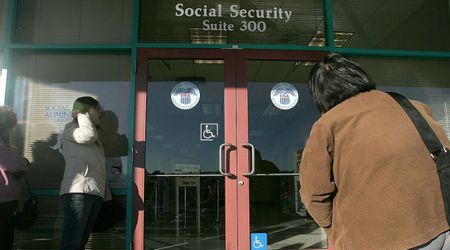New York City Property Owner Arrested After Confrontation with Squatters

With the advent of rising rents and tenant-landlord drift, specific governing laws have become a dire need. Tenant protection laws serve as vital shields for individuals residing in rented properties, offering them legal frameworks ensuring unbiased treatment and preventing power abuses by landlords. One important aspect of these laws involves how homeowners handle squatters. In a recent incident, Adele Andaloro, a 47-year-old property owner in New York City, was arrested after a confrontation with a group of squatters who allegedly took control of her property.

The series of events unfolded when Andaloro attempted to sell her $1 million home in Flushing, Queens, only to discover alleged squatters had moved in and changed the locks. Matters came to a head when she met with ABC 7 for an interview outside her property, only to find the front door open and squatters inside.
She confronted them on camera, asserting her ownership of the furniture and curtains in the house. "I'm deeply concerned that these individuals will evade consequences for taking possession of my property," Andaloro told ABC7. "It’s enraging. It’s not fair that I, as the homeowner, have to be going through this," she added.

Subsequently, the squatters called 911 while Andaloro brought in a locksmith to change the locks, leading to police intervention. Armed with the property deed, she challenged the squatters' occupancy, which eventually resulted in police escorting them off the property.
However, the situation escalated when a man named Brian Rodriguez, claiming to have a lease for the property, forcibly entered the house. Police, citing legal protocol, informed Andaloro that she couldn't evict Rodriguez without a court order, leading to her arrest for unlawful eviction.
Rodriguez, while presenting receipts for work he claimed to have done on the property, asserted his intention to remain unless compensated or through a court order.

According to the Tenant Protection Law in New York City, if a squatter resides in a property for more than 30 days, they are entitled to tenant rights. Initially designed to repurpose abandoned buildings and vacant apartments for homeless individuals, the law inadvertently allowed squatters to exploit its provisions.
While offering a lenient timeframe with certain landlord restrictions, the law prohibits homeowners from changing locks or removing squatters' belongings without permission. Moreover, evicting squatters proves challenging, requiring landlords to issue a ten-day eviction notice and, if disregarded, file a court complaint.
If approved by a judge, the homeowner can proceed with eviction through a warrant. The homeowner, however, opted against following the legal eviction process. "By the time someone conducts an investigation, it will be over 30 days, and this individual will still occupy my home," Andaloro expressed.
When the Government gives away your Property to ‘Squatters’ and demand you be a participant of their Real Estate Communism…you call the Squatters Squad. pic.twitter.com/B6zZuUPFMx
— Liz Churchill (@liz_churchill10) March 22, 2024
After the landlord was arrested, the squatters engaged in construction activities within the home, including the installation of boards covering the property, a neighbor reported. "I heard a drill and saw through my window that they were drilling holes into the wall and putting up boards," Kosta, a neighbor said.
Andaloro, now navigating the complex eviction process in landlord-tenant court, faces a prolonged legal battle as eviction cases in New York City typically take about 20 months to resolve.





















